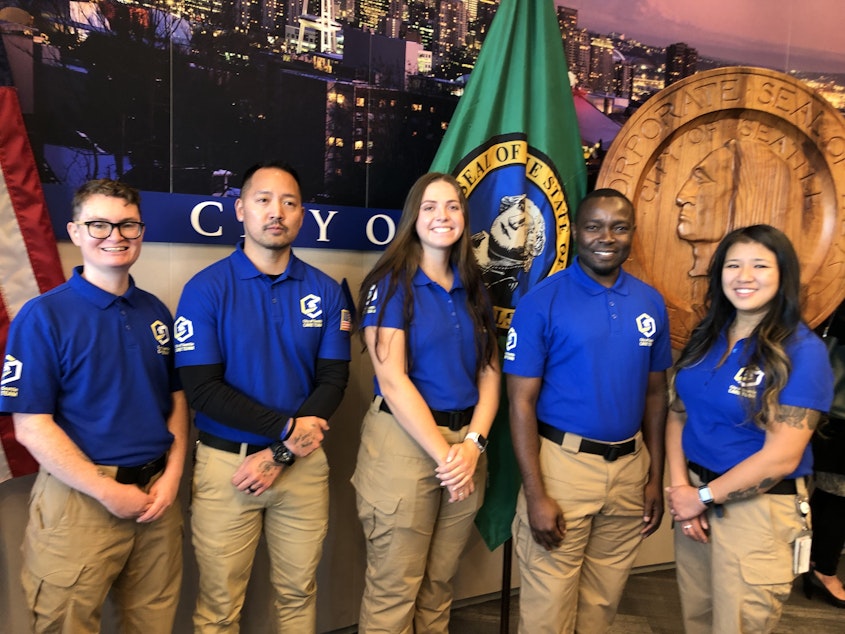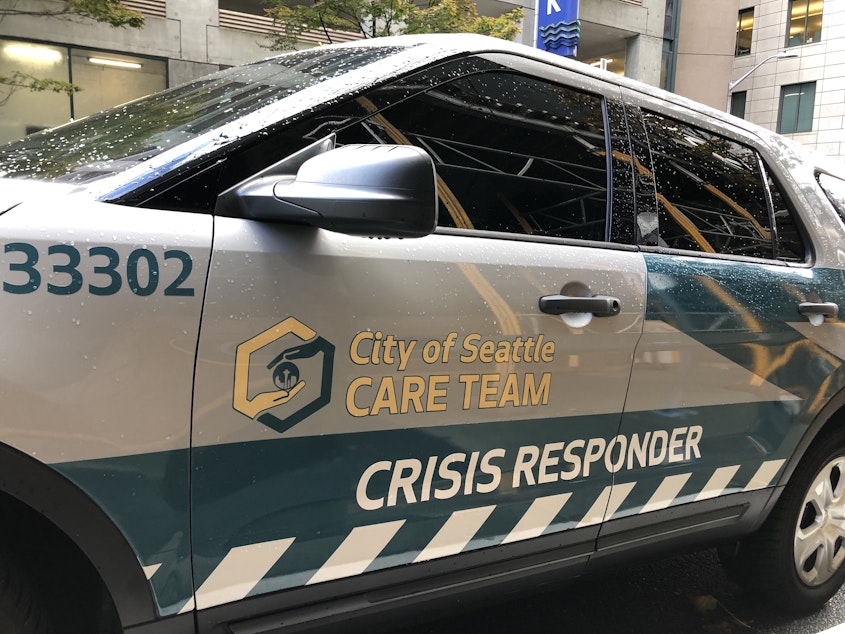Protesters sought new 911 response in Seattle. Here it is

During the Seattle protests sparked by George Floyd’s murder by Minneapolis police in 2020, a common refrain from advocates and elected officials was the need for someone besides an officer “with a badge and a gun” to respond to 911 calls for people in mental crisis.
It took years of preparation but this week Seattle officials say 911 dispatchers will begin directing teams of mental health professionals to certain emergency calls, alongside police officers.
Amy Smith is acting chief for the new Community Assisted Response and Engagement (CARE) department, which houses 911 dispatch as well as the new crisis response teams. She outlined the launch of the “dual dispatch” pilot project (meaning both police and civilian responders) at City Hall Wednesday, along with Mayor Bruce Harrell, while surrounded by pastors, police and fire officials and nonprofit leaders.
They said that Albuquerque, New Mexico, and other cities have similar programs, with one of the goals being to reduce the current strain on police staffing.
Smith said initially the teams will respond to certain calls in a limited geographic area of the city, but if they are deemed effective, the program could expand its scope.
Smith said all the CARE team members have field experience in crisis response, as well as relevant bachelors or masters degrees. They will monitor 911 dispatch from an office in the Seattle Municipal Tower, near City Hall, and respond in their own CARE-branded vehicles.
"They will be dispatched at the same time as police to low-acuity calls,” Smith said. Those calls will be vetted by the 911 system “to make sure there is not a threat of violence, and this is not a medical emergency.”
Smith said crisis response teams will respond from 11 a.m. to 11 p.m., in order to add coverage in the evening when other crisis responders aren’t available.
“Crisis calls tend to actually escalate and get worse” heading into the evening hours, she said.
Smith said “low acuity” calls can be calls of someone on the street who bystanders are concerned about. Initially the team will respond to 911 calls catalogued as “person down” and “welfare checks.” According to a statement from the mayor's office, there have been more than 8,000 calls in these two categories in 2023 so far.
For the pilot, the CARE teams will respond to calls within the city’s Downtown Activation Plan boundaries, west of I-5, and including the Chinatown-International District and Sodo.
“We’re not going to expand until we start to test and prove this concept, until police and fire are telling me that it’s useful, and that we’re responding to the types of calls that really relieve the burden on the system,” Smith said.
Smith said preparing for potential threats or escalation of individuals’ behavior is top of mind.
“We will not have officers leave the scene until they are completely convinced that we are fine here,” she said.
She said the purpose of these teams will be to triage these crisis calls, and allow police to move on to other urgent calls as soon as appropriate.
“We get to try to connect someone swiftly but we’re not in the case management business, that’s not what we’re doing, we’re responding to 911 calls,” she said.
To evaluate the impact of the teams, Smith said as one indicator, “I’ll be watching 911 – do people call starting to request the CARE team? That’s not a thing, you can’t order it like a Big Mac – but if they request it, it will help me know that there is an awareness and also there is trust in the system we’re designing.”

She noted that Seattle police have been co-responding to calls with mental health professionals since 2010.
“Even when we say ‘pilot,’ I say I’m testing and proofing a thing that is another step forward in diversified response," she said, "but this is not new.”
Charley Bickford is a strategic advisor to the CARE department. Looking at the team's vehicle parked outside the municipal tower, he said the CARE team logo of intertwined hands is meant to feel approachable.
“It doesn’t reflect a police badge or the fire patch, so it’s really independent, for this new team to be a third public safety component,” he said.
Sasha Pollock is one of the six new community crisis responders who are about to start answering 911 calls. She’s a certified peer counselor, meaning someone with lived experience in mental health and addiction issues, and who is in active recovery themselves. Most recently she did outreach work in Pioneer Square with King County’s Behavioral Health and Recovery Division.
Pollock said there’s no single ideal outcome for the many different people and situations she expects to encounter in this work.
“I don’t believe in forcing people to get treatment they aren’t wanting or looking for,” she said. If people want to go to the hospital or elsewhere, the CARE team can transport them — one of their new vehicles will be a van complete with a wheelchair lift.
“If it’s someone who’s just looking for that emotional support or expressing suicidal ideation, hopefully it’s building a safety plan with that person or providing them that emotional support,” Pollock said.
Kim Hendrickson heads the Washington Co-Responder Outreach Alliance. She said Seattle has been an innovator in its crisis responses and this new team will help 911 respond more effectively to calls concerning behavioral health, which can include mental health and substance use concerns.
While the public tends to see crisis hotlines like 988 as separate and distinct from 911 dispatch, “it’s not true,” Hendrickson said.
“The same people that need a civilian response on Monday desperately need the fire service on Tuesday, because it’s a different condition that’s presenting itself," she said. "The more we bifurcate these systems, the less we are serving the most vulnerable people.”

